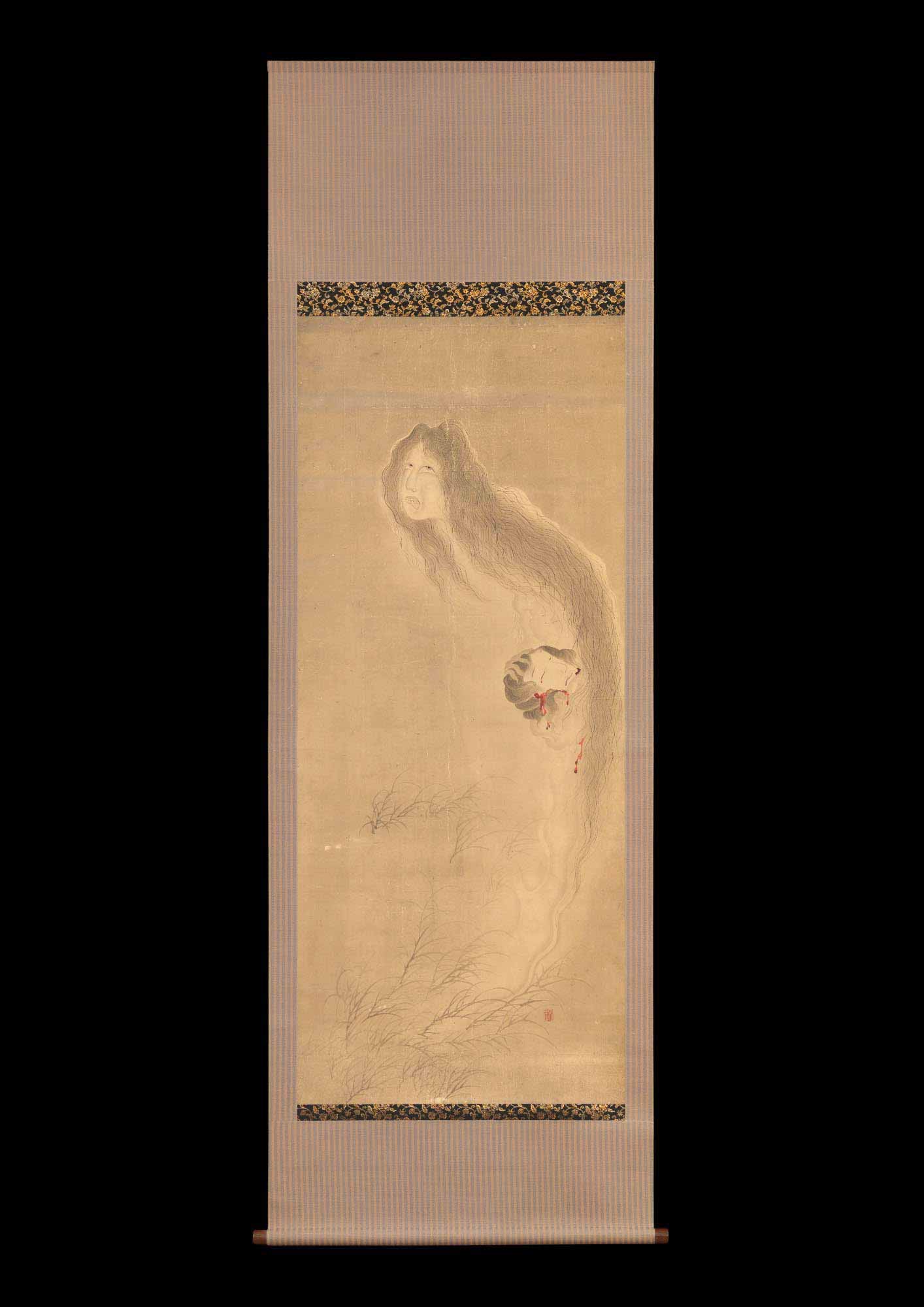Yūrei
Nagasawa Rosetsu / Paintings
- Contact Us
-
Material
A kakemono (hanging scroll) painted in ink on a buff background
-
Size
97,7 (h) x 33,3 cm [156 (h) x 35,5 cm]
-
Period
Edo period, 18th century
-
Published
"Supranatural" by Galerie Mingei, 2018
Description
Yūrei – Ghost
Nagasawa Rosetsu (1754-1799)
Seal: Rosetsu
Hyakumonogatari Kaidankai (A Gathering of One Hundred Supernatural Tales) was a popular parlor game during Edo Period Japan. The game was a simple one. In a room, as night fell, one hundred candles were lit. Guests and players gathered around the candles, taking turns telling kaidan (ghost stories). After each kaidan, a single candle was extinguished, and the room slowly grew darker and darker. The process was an evocation, with the final candle believed to summon a supernatural entity. The origin of the game is unknown. It is thought that it was first played amongst the samurai class as a test of courage, and later became fashionable amongst the townspeople.
During the 17th century kaidan increasingly became a popular subject for theatre, literature and other arts. At this time, yūrei began to be given certain attributes in order to distinguish them from living humans, and making it easier for viewers to spot yūrei characters at a glance. They are usually dressed in white, the color of the burial kimono used in Shintō funeral rituals, have long, black, disheveled hair, and lack legs or feet. Often, yūrei are accompanied by a pair of hitodama (human souls) which are depicted as floating flames in blue or green with a long, hair-thin tail.
Nagasawa Rosetsu (長沢芦雪, 1754-1799) was an 18th-century (Edo period) Japanese painter of the Maruyama School, known for his versatile style. He was born to the family of a low-ranking samurai. He studied with Maruyama Ōkyo in Kyoto, founder of the Shijō school, who created the first known example of the now traditional yūrei, in his painting The Ghost of Oyuki.

